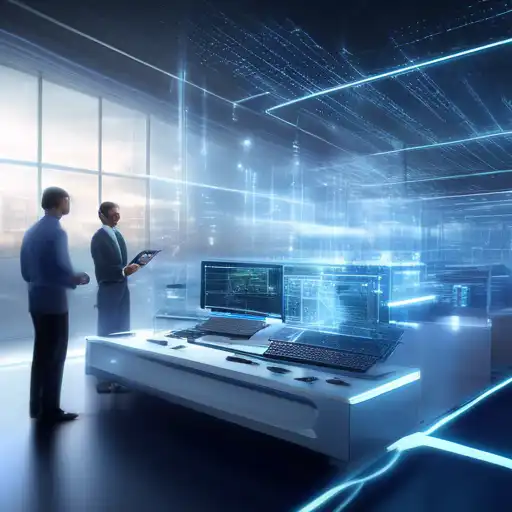Revolutionizing Data Speed: The Power of Edge Computing
In today's fast-paced digital world, the demand for quicker data processing and real-time analytics has never been higher. Edge computing emerges as a groundbreaking solution, bringing data processing closer to the source of data generation. This innovative approach significantly reduces latency, enhances speed, and improves efficiency, making it a cornerstone for the future of technology.
What is Edge Computing?
Edge computing is a distributed computing paradigm that processes data near the edge of the network, where the data is being generated, rather than relying on a centralized data-processing warehouse. This method is particularly beneficial for Internet of Things (IoT) devices, which generate vast amounts of data that need to be processed in real time.
Benefits of Edge Computing
The advantages of edge computing are manifold, including:
- Reduced Latency: By processing data closer to its source, edge computing minimizes the delay in data transmission, enabling faster response times.
- Bandwidth Efficiency: It reduces the need to send vast amounts of data over the network, saving bandwidth and reducing costs.
- Enhanced Security: Processing data locally can help in keeping sensitive information secure, as it doesn't need to traverse over the network to a central server.
- Improved Reliability: Edge computing can operate independently of the cloud, ensuring continuous operation even if connectivity is lost.
Edge Computing vs. Cloud Computing
While cloud computing has been the backbone of data storage and processing for years, edge computing offers a complementary approach. Unlike cloud computing, which relies on centralized data centers, edge computing decentralizes processing power to the edge of the network. This doesn't mean edge computing will replace cloud computing; instead, they work together to provide a more efficient and scalable solution.
Applications of Edge Computing
Edge computing is transforming industries by enabling real-time data processing and analytics. Some of its key applications include:
- Smart Cities: From traffic management to public safety, edge computing helps in processing data locally for quicker decision-making.
- Healthcare: Wearable devices and remote monitoring systems use edge computing to provide real-time health analytics.
- Manufacturing: Predictive maintenance and quality control are enhanced through immediate data processing on the factory floor.
- Retail: Personalized shopping experiences are created by analyzing customer data in real time at the edge.
The Future of Edge Computing
As the number of IoT devices continues to grow, the importance of edge computing will only increase. With advancements in 5G technology, the potential for edge computing to deliver unprecedented speed and efficiency is immense. Businesses and industries are rapidly adopting edge computing to stay ahead in the digital transformation race.
Edge computing is not just a trend; it's a pivotal shift in how we process and analyze data. By bringing computation closer to the data source, it offers a faster, more secure, and efficient way to handle the ever-increasing data demands of the modern world.
For more insights into how technology is shaping our future, explore our articles on cloud computing and IoT.
